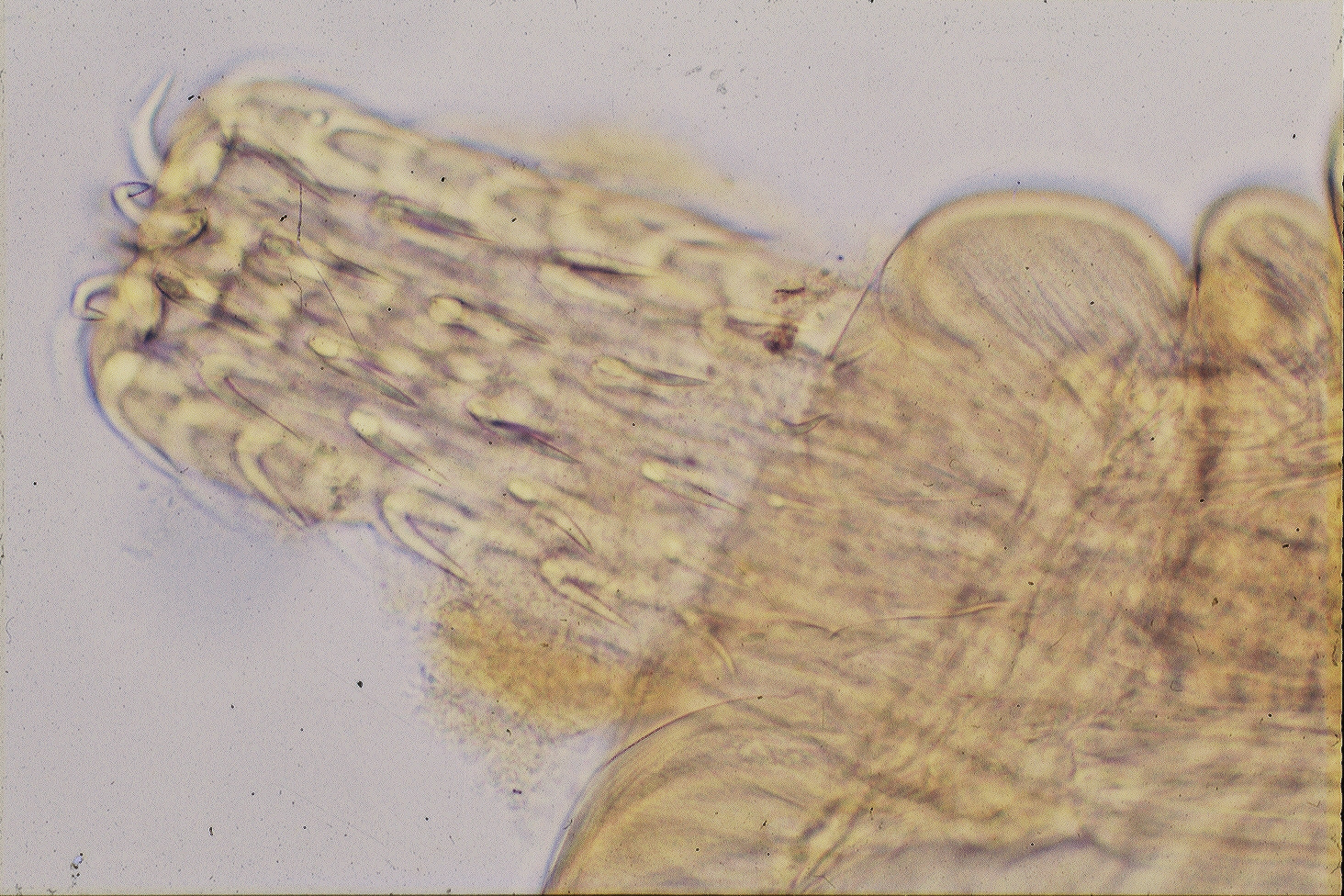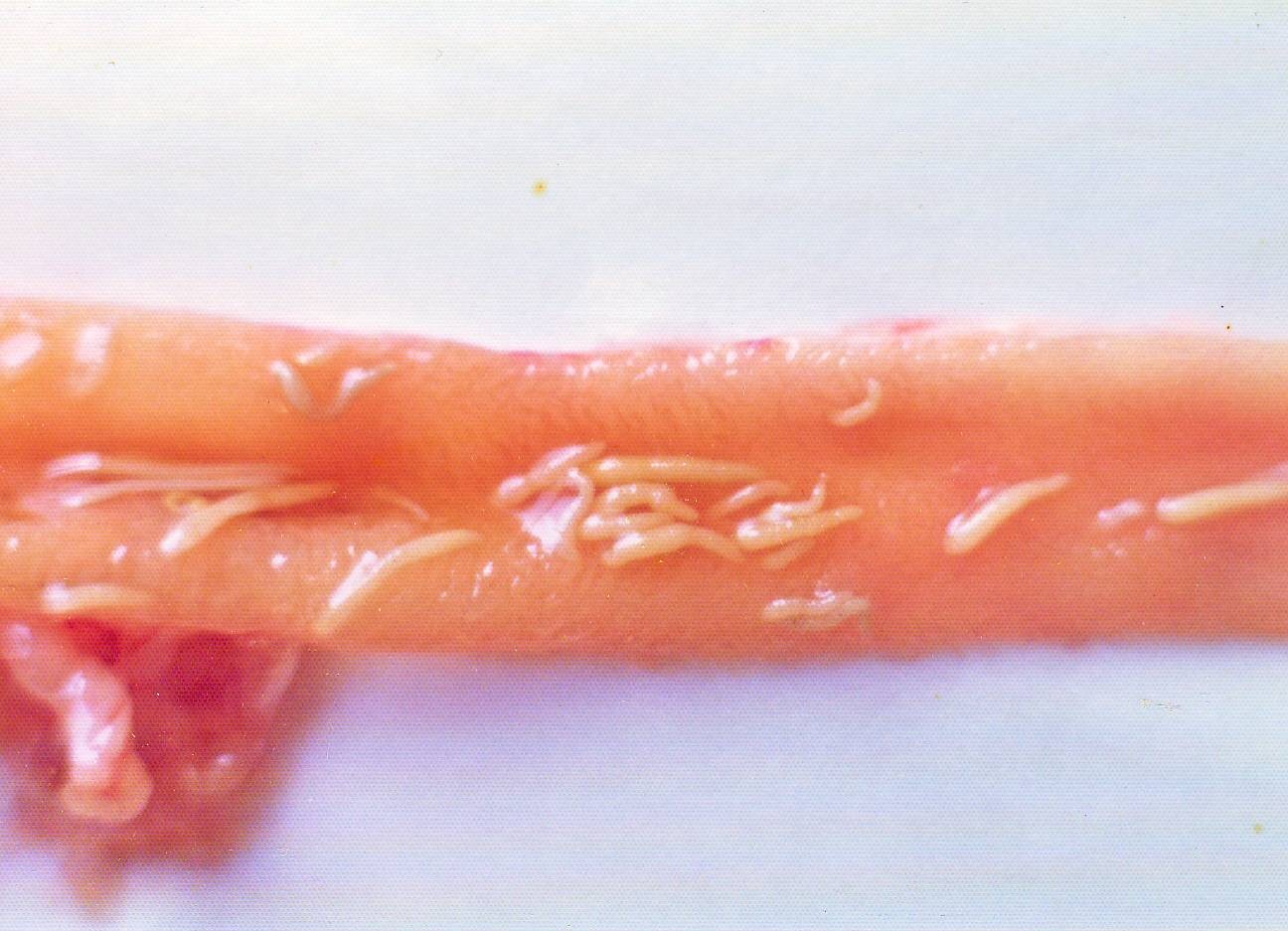

(Photos by T. Awakura (1, 3) and K. Nagasawa(2))


Fig. 2. A. minor parasitizing the rectum.
Fig. 1. Numerous acanthocephalans in masu salmon.
Fig. 3. Proboscis of acanthocephalan.
| Parasite | Acanthocephalus minor |
|---|---|
| Taxonomy | Acanthocephala, Palaeacanthocephala, Echinorhynchida |
| Hosts | Salmonid fishes including masu salmon (Oncorhynchus masou masou) and forktongue goby (Chaenogobius annularis). |
| Infection site | Intestine |
| Clinical signs | Infected fish usually exhibits no external abnormality. Acanthocephalus minor (several to 20 mm) is observed in the intestine (Figs. 1 and 2). |
| Parasitology | The parasite body is several to 20 mm long and composed of the proboscis, neck and trunk. The parasite burrows into the intestinal wall of the host with its proboscis. It is dioecious and females produce eggs, which are shed into the water. After eggs are ingested by the isopod Asellus hilgendorf (the intermediate host), the parasite develops to the acanthor larva. Fish are infected with the parasite by uptake of the isopodes. The pool-dwelling forktongue goby is likely to be more infected with the parasite than the riffle-dwelling forktongue goby, because the isopodes prefer the static current condition. (Nagasawa et al., 1982). |
| Pathology | The pathologial effects to fish is low.. |
| Health hazard | Since this parasite is not infectious to human, it is harmless in food hygiene. |
| Diagnosis | Acanthocephalus minor parasitizing the rectal region can be visually observed. Check the morphology of the parasite because the body of acanthocephalan is composed of proboscis, neck and trunk (Fig. 3). Detailed morphological observations are needed to differentiate this parasite from A. opsariichthydis, A. acerbus and A. lucidus, which often parasitze some cultured salmonids. |
| Other information | Control methods have not been developed because the parasite is considered to be low pathogenic. It is important to control the population of the intermediate hosts by removing the remnants of food and faeces. |
| References | Nagasawa, K., S. Egusa
and K. Ishino (1982): Occurrence of Acanthocephalus
minor (Acanthocephala) in two types of the goby, Chaenogobius annularis. Japan.
J. Ichthy., 29, 229-231. |